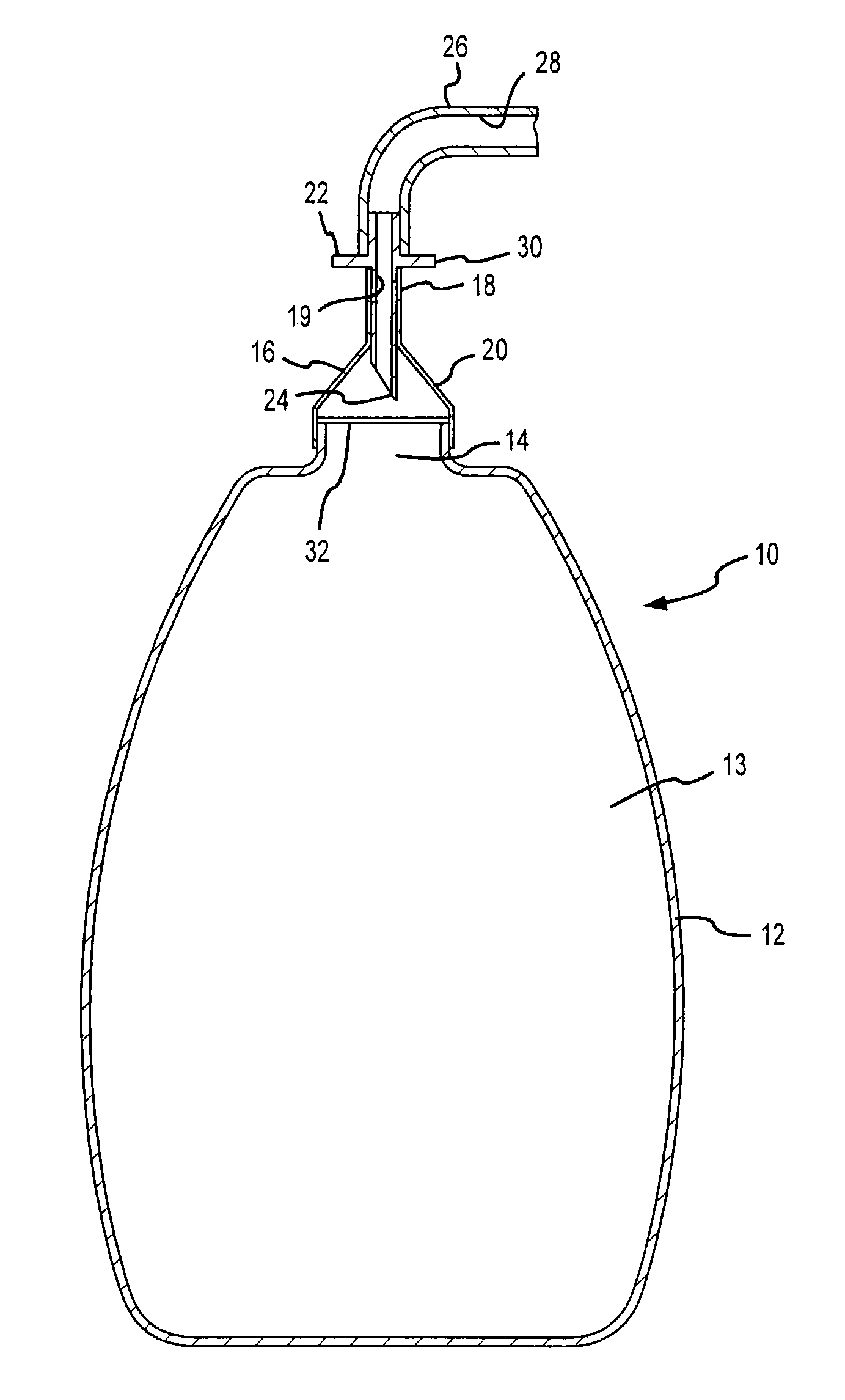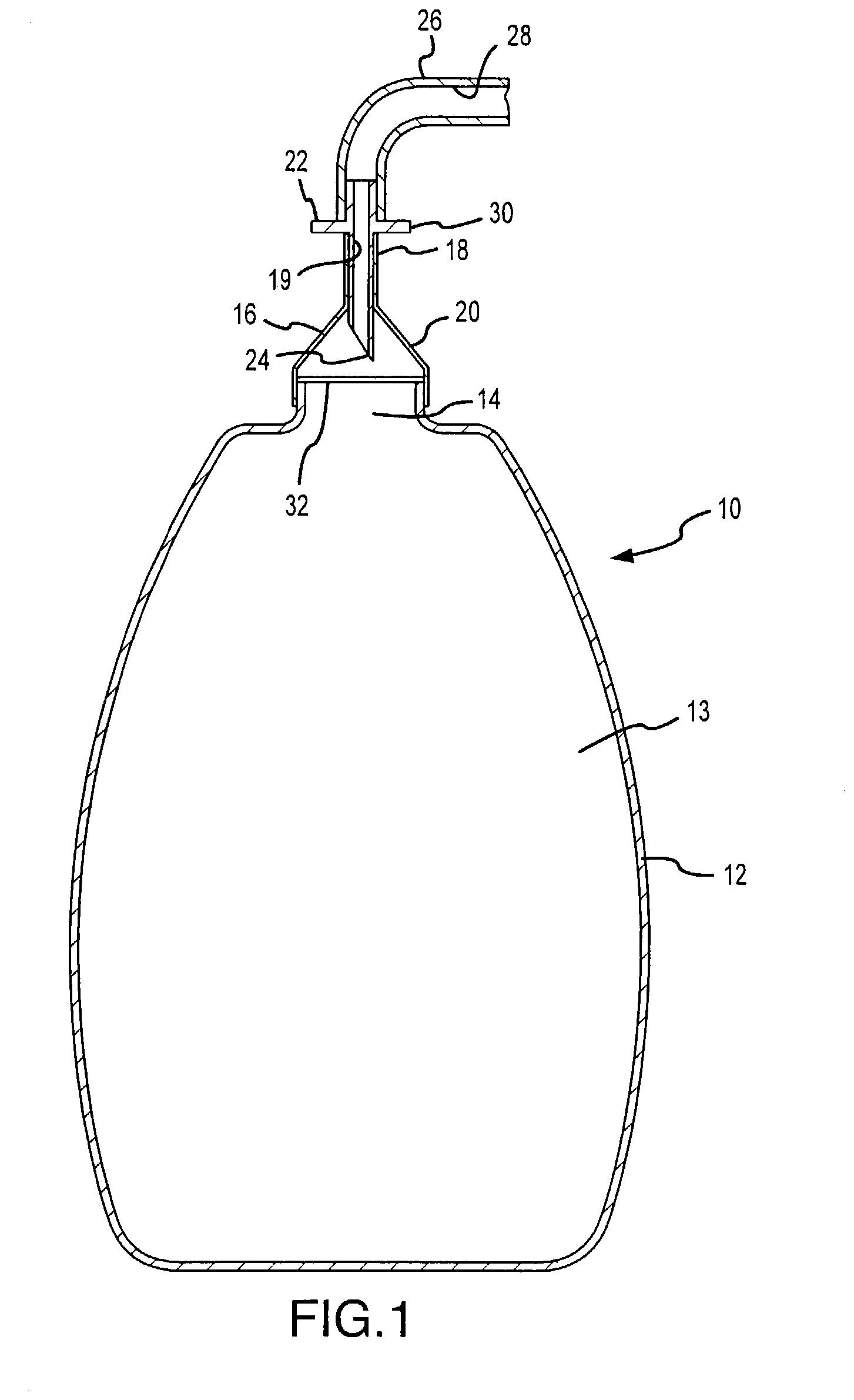Device for withdrawing body fluids
a technology for body fluids and devices, applied in the field of medical devices, can solve the problems of paracentesis, formation and rupture of umbilical hernias, respiratory distress, etc., and achieve the effect of minimizing the time of use and losing the vacuum
- Summary
- Abstract
- Description
- Claims
- Application Information
AI Technical Summary
Benefits of technology
Problems solved by technology
Method used
Image
Examples
Embodiment Construction
[0031]FIG. 1 shows a preferred embodiment of the invention 10 in a partial sectional view. The invention includes a bottle 12 having a mouth area 14. Covering the mouth area 14 is an elastomeric cap 16 having a sleeve 18 at the upper end and a widened body 20 at the lower end. The sleeve 18 of the elastomeric cap 16 receives a spike 22 in a substantially air tight seal between the spike 22 exterior surface and the lumen of the sleeve 18.
[0032]The lower end of the spike 22 terminates in a point 24. The upper end of the spike 22 receives a drainage line 26 having a lumen 28 therethrough. As in the connection between the spike 22 and the sleeve 18 of the elastomeric cap 16, this connection between the spike 22 and the drainage line 26 is preferably substantially air-tight. The spike 22 may also include a circumferential flange 30 to assist in manipulating the spike 22 in relation to the bottle 12 in the manner described below. Extending through the spike 22 is a spike lumen 19.
[0033]Se...
PUM
 Login to View More
Login to View More Abstract
Description
Claims
Application Information
 Login to View More
Login to View More - R&D
- Intellectual Property
- Life Sciences
- Materials
- Tech Scout
- Unparalleled Data Quality
- Higher Quality Content
- 60% Fewer Hallucinations
Browse by: Latest US Patents, China's latest patents, Technical Efficacy Thesaurus, Application Domain, Technology Topic, Popular Technical Reports.
© 2025 PatSnap. All rights reserved.Legal|Privacy policy|Modern Slavery Act Transparency Statement|Sitemap|About US| Contact US: help@patsnap.com



